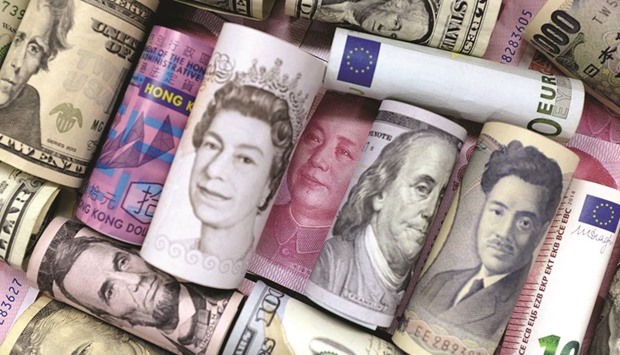China’s foreign exchange reserves rose in April to $3.22tn, central bank data showed yesterday, marking a second monthly rise this year and suggesting the central bank is easing off its interventions as capital outflows ease.
Economists surveyed in a Reuters poll had expected foreign exchange reserves to fall to $3.2tn.
The central bank data also comes after a surprise increase in March when foreign exchange reserves rose slightly to $3.21tn, the first monthly increase since November.
Prior to that, foreign reserves had dropped $28.57bn in February to $3.2tn, the lowest since December, 2011.
While China’s reserves have declined steadily since June 2014 when they peaked at $3.99tn, the trend has since moderated, according to recent official data.
Capital outflows from China have begun to ease, according to recent data from the State Administration of Foreign Exchange (SAFE), with net foreign exchange sales by commercial banks in March only slightly up at $36.4bn, and considerably lower than $54.4bn in net sales earlier in January.
Central bank governor Zhou Xiaochuan said at a G20 conference in April that the foreign exchange market had stabilized, with the yuan’s recent trend reflecting market supply and demand and holding steady against a basket of currencies.
Nevertheless, economists believe that China still faces a huge challenge of stabilising the yuan, especially amid a significant supply glut and sluggish demand at home.
While cooling expectations of US interest rate hikes have recently eased pressures on the yuan, a future US rate increase still remains a big risk factor for triggering further disruption for the world’s second-largest economy, economists have said.
Since December 2015, the People’s Bank of China has moved to curb currency speculation, including limiting yuan-based funds’ overseas investments and implementing a reserve requirement ratio on offshore banks’ domestic yuan deposits. Chinese officials are also studying the introduction of a currency trading tax to penalise speculators, as well as seeking to ease capital rules for foreign institutional investors to buy onshore stocks and bonds.
With the first quarter of 2016 showing signs of moderation in capital outflows, analysts are closely watching whether foreign reserve declines will moderate this year in line with expectations that the yuan will stabilise.
Concerns over China’s foreign exchange rate policy flared up last year following a surprise devaluation of the yuan in August and a sharp slide in the yuan this year in January, fanning fears of an economic slowdown.
China’s reserves, which are the world’s largest, fell $513bn in 2015, marking the largest annual drop in history. Central bank data showed on Saturday that China’s gold reserves rose to $74.751bn at the end of April, compared to $71.485 at end March.

Concerns over China’s foreign exchange rate policy flared up last year following a surprise devaluation of the yuan in August and a sharp slide in the yuan this year in January, fanning fears of an economic slowdown
